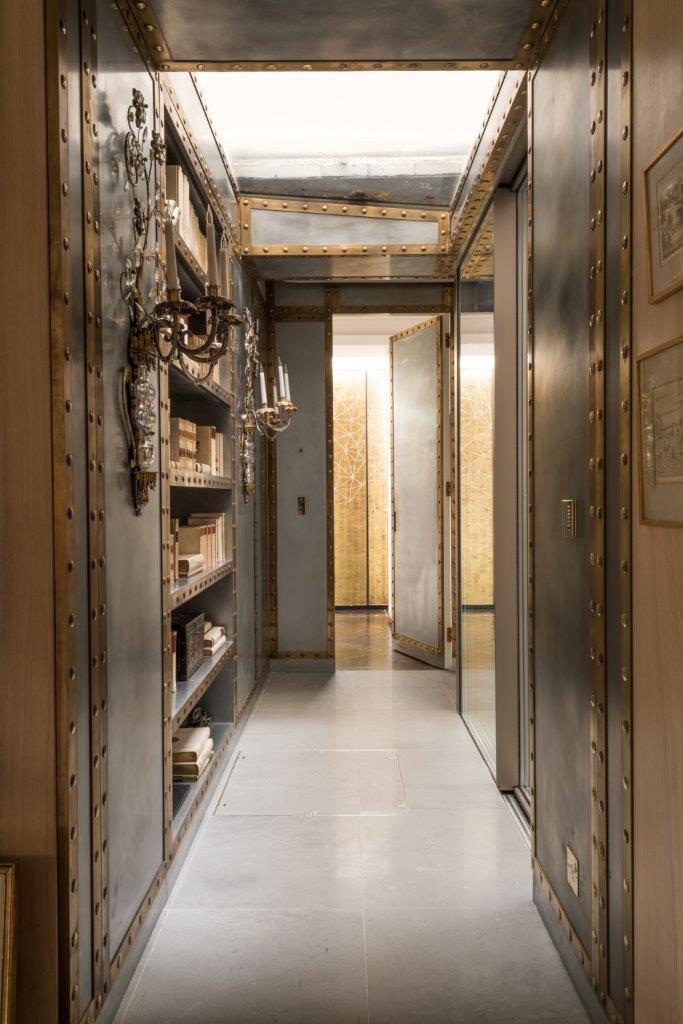design et al are delighted to announce that Rupert Bevan have been shortlisted for a Wallcovering Award in The International Product Design Awards 2016
This wall finish was inspired by Jules Verne’s esteemed classic novel ‘Twenty Thousand Leagues Under the Sea’ and the idea of transforming a corridor into a more engaging interior space by creating the atmosphere of a Vintage/Victorian submarine. Each large panel of patinated zinc is surrounded by a thick trim in brass with studded detailing. These details enhance the nautical feel of the theme. The panels are of variable size and configuration to adapt to the irregularities of the interior architecture.

The brief from interior designer Lucy Eadie was to create a wall finish which evoked the feeling of being aboard Captain Nemo’s Nautilus, but which also conveyed a luxurious aesthetic. Due to the specific architecture of the corridor space and the fitted joinery to accommodate, it was necessary to consider the panel layout very carefully and integrate this into the design itself. It was also important to create a finish that enhanced the light rather than absorbed it, as the basement apartment in Kensington has a limited amount of daylight filtering in. Achieving the right degree of patination was essential to give it the vintage feel required.

The wallcovering manages to completely transform a corridor – which would otherwise be a ‘dead space’; a room which exists purely for the function of traversing through it – into one of the most exciting interiors in the property. It makes visiting each different room a journey in itself, reminiscent of the adventures that inspired it. As an architectural finish it works very well as it is suitable for cladding doors, architraves and fitted shelving. The semi-reflective sheen on the zinc enhances light. The panels can be large to allow for hanging artwork, or smaller to make the decorative aspect of the brass edging more effective. It is also versatile enough work as cladding and decoration for the fitted cabinetry built into the walls, which keeps the finish consistent.
